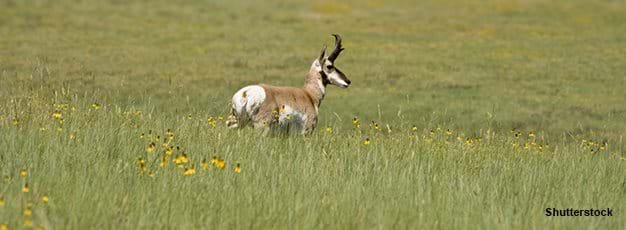Recent Conservation Reserve Program Enrollments Signal Changing Priorities

USDA's Conservation Reserve Program (CRP), now over 25 years old, removes over 29 million acres (as of October 2011) of environmentally sensitive cropland and pasture from production under 10- to 15-year contracts with farmers. Land enrolled in the program is planted to grasses, trees, and other cover. As a voluntary program, landowners can offer eligible parcels for enrollment, but selection of land into the CRP is based on program goals. Offers are not automatically accepted. Over time, the program's size and goals have changed from its early emphasis on limiting soil erosion to include wildlife, water and air quality, and other conservation goals. Driven by changes in legislative mandates, commodity markets, and environmental concerns, the CRP continues to evolve.
The 2008 Farm Act capped program enrollment at 32 million acres, down from a peak of 36.8 million acres in 2007. The required reduction was achieved by limiting the 2009 contract extension offers to only 1.5 million of the 4.3 million expiring acres, of which 1.1 million were reenrolled. High commodity prices also may be affecting program enrollment. CRP rental payment rates received by farmers are based on county average cropland rental rates that, while updated annually, may not reflect farmers' long-term expectations. For example, between 2006 and 2011, net farm income increased by about 80 percent while the cropland rental rates used by the program rose by about 40 percent.
Declining interest in the program may explain the higher-than-usual proportion of offers accepted into the CRP during 2010 and 2011 general signups--89 and 75 percent of offers were accepted, respectively, even as program acres shrank, compared with acceptance rates ranging from 48 to 74 percent in 1997-2006. A relatively high fraction of offered acres were re-enrollments (over 85 percent in 2011), suggesting that the pool of landowners interested in the CRP may be shrinking, or at a minimum, not growing. Furthermore, interest seems to be shifting toward less productive land, with rental payments for newly accepted general signup acres basically constant between 2006 and 2011.
As the total acreage enrolled via CRP's general signups has declined, enrollment of lands meeting more stringent requirements, including land in one of the many State-Federal conservation partnerships under USDA's Conservation Reserve Enhancement Program (CREP), has increased. Continuous signups, which address high-priority environmental concerns outside of the CRP's general signup process, grew from 3.7 million acres in 2007 to over 5.1 million acres in 2011. Further growth in continuous signups is likely. For example, about two-thirds of the 850,000 continuous signup acres allocated to the 2008 State Acres for Wildlife Enhancement initiative have been enrolled. New initiatives continue to be developed, such as the Louisiana Coastal Prairie CREP and expansion of Nebraska's Platte-Republican CREP.
The Influence of Rising Commodity Prices on the Conservation Reserve Program, by Daniel Hellerstein and Scott Malcolm, USDA, Economic Research Service, February 2011
Conservation Reserve Program Statistics, USDA, Farm Service Agency, January 2011, Conservation Reserve Program
Challenges Facing USDA’s Conservation Reserve Program, by Daniel Hellerstein, USDA, Economic Research Service, June 2010


